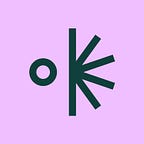Very Clickable: How two copywriters built a business off of an (insane)deck
Decks can be boring. This is a fact of life. But if done right, a creative presentation can actually do the opposite — it can bring radical new life to your project that you didn’t anticipate.
Such happened to Annie Goodman and Ryan Hynes. They’re freelance copywriters who’ve landed contracts with companies like Casper, DoorDash, and quip all by way of their (self-described “insane”) introductory pitch deck. Here’s what they have to say about building a simple presentation that showcases big personality.
What was most important to you when crafting your pitch deck?
Our biggest priority in everything we do is making sure our personalities come across clearly and authentically. Truthfully, building a pitch deck that was focused on who we are as we relate to our work was stressful because we didn’t want to sell ourselves short!
How did you consider the order and flow of your story?
It’s one of those balloon-style formats. We start succinctly, then expand into tons of detail, and then conclude neat and tidily. Hopefully people get the essence of our pitch immediately, and then they can delve into the details as they see fit. For us, the middle slides almost serve as leisure reading — a chance to bask in what we’re actually selling.
As writers, why did you choose to pitch yourselves in a presentation?
As copywriters, we have to be able to show-not-tell our skillset (which obviously means lots of writing and lots of words). We actually didn’t initially plan on building a deck.
We were answering prompts in a Google Doc while having a free-flowing writing “sesh,” and realized that a 10-page doc was simply not shareable (and would likely blind any of our readers with too much text).
This challenge prompted us to create a deck that would force us to organize our words, our story, and our message and a visually-compelling way that wouldn’t take away from the core of what we do (which involves a lot of words).
How did you collaborate on the final product?
We like to free-write together simultaneously. Sometimes this means typing next to each other in a Google Doc. Other times it means creating an entire slide and sharing with the other person. Especially for a pitch deck in which you’re pitching yourself, it’s really helpful to have another eye on your words. The other person can remind you to include accomplishments that you’re being shy about!
We’ve grown to know each other’s working styles and history in a way that allows us to celebrate one another’s work, complement one another’s gaps, and amplify the special factors that one could easily miss about themselves.
What’s your advice to creatives, marketers, and brands looking to’ zhuzh up’ how they present themselves (or their ideas) to clients?
Think first about what you would actually want to read if someone sent you a pitch deck on a Wednesday afternoon at 3pm. As creatives and marketers, we often take ourselves out of our own shoes when it comes to work and forget that we are our own ultimate audience.
Consider what elements would attract someone’s eye, someone’s mind, and then someone’s spirit. Business is serious, but that doesn’t mean you can’t keep things light as you lead to the bottom line.
Check out Projector’s presentation templates for more inspiration.
